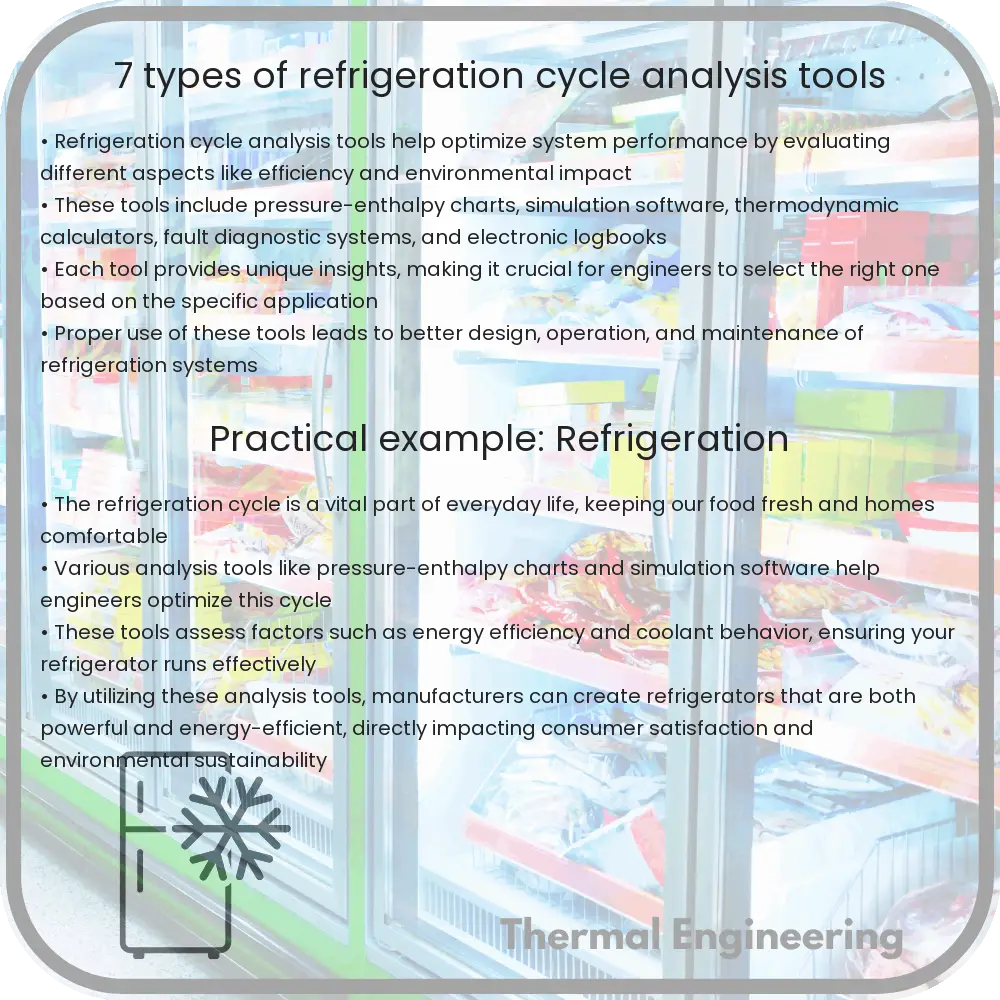Understand the crucial tools used in analyzing and optimizing refrigeration cycles across various applications.

7 Types of Refrigeration Cycle Analysis Tools
The analysis of refrigeration cycles is crucial for designing and optimizing various cooling systems used in domestic, commercial, and industrial applications. Engineers use several tools to analyze and enhance the efficiency of refrigeration cycles. Here, we explore seven essential types of analytical tools utilized in the study of refrigeration cycles.
1. Pressure-Enthalpy (P-h) Diagrams
A Pressure-Enthalpy (P-h) diagram is a vital tool in understanding the thermodynamic properties and energy transfers within a refrigeration cycle. It graphically represents the relationship between the pressure and the enthalpy (total heat content) of the refrigerant at different stages of the refrigeration cycle, including evaporation and condensation processes.
2. Psychrometric Charts
Psychrometric charts are used primarily in the analysis of air conditioning systems, which are a type of refrigeration cycle. The chart illustrates properties of air-water vapor mixtures at various temperatures and humidity levels, enabling engineers to analyze the air conditioning processes effectively, including cooling, heating, humidification, and dehumidification.
3. Refrigerant Property Tables
Refrigerant property tables provide detailed information on the thermodynamic properties of various refrigerants. Engineers use these tables to calculate important parameters such as temperature, pressure, enthalpy, and entropy at different points in the refrigeration cycle. This information is crucial for the correct sizing of components and ensuring efficient operation.
4. Thermodynamic Cycle Simulators
Thermodynamic cycle simulators are advanced software tools that allow for the dynamic simulation of refrigeration cycles and other thermodynamic processes. These tools typically offer options to model various cycles, customize refrigerant properties, and simulate real-time operational conditions, thus providing a comprehensive analysis platform.
5. Energy Efficiency Calculators
Energy efficiency calculators are used to estimate the efficiency of refrigeration systems. They analyze input parameters like electricity consumption, heat extraction rates, and overall system configuration to compute performance metrics such as Coefficient of Performance (COP) and Energy Efficiency Ratio (EER).
6. Vibration Analysis Tools
Vibration analysis tools help in diagnosing and preventing mechanical issues within refrigeration systems, such as those in compressors or fans, by detecting abnormal vibrations early. These tools are essential for preventative maintenance and can significantly extend the life of refrigeration equipment.
7. Computational Fluid Dynamics (CFD) Software
Computational Fluid Dynamics (CFD) software is used to simulate fluid and gas flow within the refrigeration cycle. It helps engineers visualize and optimize the flow dynamics and heat transfer in various components of the system, such as condensers, evaporators, and air ducts.
In conclusion, these seven types of refrigeration cycle analysis tools are fundamental for engineers to design, analyze, and optimize refrigeration systems. By effectively utilizing these tools, they can improve system efficiency, enhance reliability, and reduce energy consumption, leading to better engineered cooling solutions.